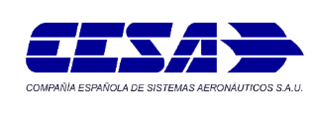
CESA is taking part in the ReCam project “Rapid Reconfiguration of Flexible Production Systems” through Capability-based Adaptation, Auto-configuration and Integrated tools for Production Planning” financed by the European Commission within the Horizon 2020 programme for research and innovation projects.
The main objective of the project is to develop and validate a new generation of flexible production systems that allow for a rapid and dynamic reaction to changes in the market, such as fluctuations in demand, resource shortfalls or changes in production. According to the objectives of the ReCam project, two real industrial application scenarios of the aeronautics and automotive sectors will be optimized, the respective representatives of which in the consortium are CESA and Bosch GmbH.
CESA, as the aeronautical end-user of the technology developed in the project, has selected the assembly process of the A350 Thrust Reverser Actuator to be optimized according to the objectives of the ReCam programme. For this, CESA will collaborate with Tecnalia in the definition of the hardware and software requirements for the chosen use case and in the final demonstration. Among other improvements, they intend to make progress in the concept of secure collaborative human-robot handling.
The consortium includes a partner as important as Bosch GmbH as the project leader. It also has Spanish participation via the company DGH Robótica, automatización y mantenimiento Industrial S.A. and the Tecnalia research centre. Other members of the consortium are the University of Milan (POLIMI) and the Tampere University of Technology (Finland), the Austrian NXT Control GmbH and the Italian companies Cosberg SPA and Enginsoft SPA. Except for Bosch and CESA, the other members of the consortium will be acting as technology facilitators (automation, robotics, etc.), offering solutions that allow the use cases to be optimized.
The expected duration of the project is of 3 years. The ReCam project is structured in 8 work packets ranging from defining the requirements of each one of the use cases to the validation and implementation in these two real scenarios of the technologies developed by the intermediate work packets.

